1. Standring S. 2008. Gray's anatomy: the anatomical basis of clinical practice. 40th ed. Churchill Livingstone;Edinburgh: p. 905–6.
2. Rodríguez-Niedenführ M, Vázquez T, Nearn L, Ferreira B, Parkin I, Sañudo JR. 2001; Variations of the arterial pattern in the upper limb revisited: a morphological and statistical study, with a review of the literature. J Anat. 199(Pt 5):547–66. DOI:
10.1046/j.1469-7580.2001.19950547.x. PMID:
11760886. PMCID:
PMC1468366.

3. Singer E. 1933; Embryological pattern persisting in the arteries of the arm. Anat Rec. 55:403–9. DOI:
10.1002/ar.1090550407.

5. Weibel J, Fields WS. 1965; Tortuosity, coiling, and kinking of the internal carotid artery. I. Etiology and radiographic anatomy. Neurology. 15:7–18. DOI:
10.1212/WNL.15.1.7. PMID:
14257832.

7. Ashwini C, Vasantha K. 2014; An unusual tortuous brachial artery and its branches: histological basis and its clinical perspective. Int J Life Sci Biotechnol Pharm Res. 3:121–4.
8. Dobrin PB, Schwarcz TH, Baker WH. 1988; Mechanisms of arterial and aneurysmal tortuosity. Surgery. 104:568–71. PMID:
3413685.
9. Du Toit DF, Sunshine M, Knott-Craig C, Laker L. 1985; Gangrene of the hand and forearm after inadvertent intra-arterial injection of pyrazole. A case report. S Afr Med J. 68:491–2. PMID:
4049165.
10. Handlogten KS, Wilson GA, Clifford L, Nuttall GA, Kor DJ. 2014; Brachial artery catheterization: an assessment of use patterns and associated complications. Anesth Analg. 118:288–95. DOI:
10.1213/ANE.0000000000000082. PMID:
24445630.
11. Tubbs R, Shoja MM, Loukas M. 2016. Bergman's comprehensive encyclopedia of human anatomic variation. John Wiley & Sons;New York: DOI:
10.1002/9781118430309.
12. Segal R, Machiraju U, Larkins M. 1992; Tortuous peripheral arteries: a cause of focal neuropathy. Case report. J Neurosurg. 76:701–4. DOI:
10.3171/jns.1992.76.4.0701. PMID:
1545266.
13. Nkomozepi P, Xhakaza N, Swanepoel E. 2017; Superficial brachial artery: a possible cause for idiopathic median nerve entrapment neuropathy. Folia Morphol (Warsz). 76:527–31. DOI:
10.5603/FM.a2017.0013. PMID:
28198531.

14. Gan HW, Yip HK, Wu CJ. 2010; Brachial approach for coronary angiography and intervention: totally obsolete, or a feasible alternative when radial access is not possible? Ann Acad Med Singap. 39:368–73. PMID:
20535426.
15. Alvarez-Tostado JA, Moise MA, Bena JF, Pavkov ML, Greenberg RK, Clair DG, Kashyap VS. 2009; The brachial artery: a critical access for endovascular procedures. J Vasc Surg. 49:378–85. discussion 385DOI:
10.1016/j.jvs.2008.09.017. PMID:
19028057.

16. Panagouli E, Anagnostopoulou S, Venieratos D. 2014; Bilateral asymmetry of the highly bifurcated brachial artery variation. Rom J Morphol Embryol. 55:469–72. PMID:
24970004.
17. Cherukupalli C, Dwivedi A, Dayal R. 2007; High bifurcation of brachial artery with acute arterial insufficiency: a case report. Vasc Endovascular Surg. 41:572–4. DOI:
10.1177/1538574407305798. PMID:
18166644.

18. Tsoucalas G, Eleftheriou A, Panagouli E. 2020; High bifurcation of the brachial artery: an embryological overview. Cureus. 12:e7097. DOI:
10.7759/cureus.7097. PMID:
32231893. PMCID:
PMC7098415.

20. Lioupis C, Mistry H, Junghans C, Haughey N, Freedman B, Tyrrell M, Valenti D. 2010; High brachial artery bifurcation is associated with failure of brachio-cephalic autologous arteriovenous fistulae. J Vasc Access. 11:132–7. DOI:
10.1177/112972981001100209. PMID:
20155716.

21. Hansdak R, Arora J, Sharma M, Mehta V, Suri RK, Das S. 2015; Unusual branching pattern of brachial artery - embryological basis and clinicoanatomical insight. Clin Ter. 166:65–7. DOI:
10.7417/CT.2015.1817. PMID:
25945432.
22. Natsis K, Papadopoulou AL, Paraskevas G, Totlis T, Tsikaras P. 2006; High origin of a superficial ulnar artery arising from the axillary artery: anatomy, embryology, clinical significance and a review of the literature. Folia Morphol (Warsz). 65:400–5. PMID:
17171623.
23. Jacquemin G, Lemaire V, Medot M, Fissette J. 2001; Bilateral case of superficial ulnar artery originating from axillary artery. Surg Radiol Anat. 23:139–43. DOI:
10.1007/s00276-001-0139-2. PMID:
11462864.

24. Nakatani T, Tanaka S, Mizukami S, Shiraishi Y, Nakamura T. 1996; The superficial ulnar artery originating from the axillary artery. Ann Anat. 178:277–9. DOI:
10.1016/S0940-9602(96)80068-9. PMID:
8712378.

26. Bozer C, Ulucam E, Kutoglu T. 2004; A case of originated high superficial ulnar artery. Trakia J Sci. 2:70–3.
27. Nakatani T, Tanaka S, Mizukami S. 1998; Superficial ulnar artery originating from the brachial artery and its clinical importance. Surg Radiol Anat. 20:383–5. DOI:
10.1007/BF01630626. PMID:
9894322.

28. Chin KJ, Singh K. 2005; The superficial ulnar artery--a potential hazard in patients with difficult venous access. Br J Anaesth. 94:692–3. DOI:
10.1093/bja/aei548. PMID:
15814810.

31. Porter CJ, Mellow CG. 2001; Anatomically aberrant forearm arteries: an absent radial artery with co-dominant median and ulnar arteries. Br J Plast Surg. 54:727–8. DOI:
10.1054/bjps.2001.3706. PMID:
11728121.

33. Sieger J, Patel L, Sheikh K, Parker E, Sheng M, Sakthi-Velavan S. 2019; Superficial brachioulnar artery and its clinical significance. Anat Cell Biol. 52:333–6. DOI:
10.5115/acb.19.008. PMID:
31598363. PMCID:
PMC6773909.

34. Rodríguez-Baeza A, Nebot J, Ferreira B, Reina F, Pérez J, Sañudo JR, Roig M. 1995; An anatomical study and ontogenetic explanation of 23 cases with variations in the main pattern of the human brachio-antebrachial arteries. J Anat. 187(Pt 2):473–9. PMID:
7592009. PMCID:
PMC1167441.
37. Uglietta JP, Kadir S. 1989; Arteriographic study of variant arterial anatomy of the upper extremities. Cardiovasc Intervent Radiol. 12:145–8. DOI:
10.1007/BF02577379. PMID:
2507150.

38. Jennings WC, Mallios A, Mushtaq N. 2018; Proximal radial artery arteriovenous fistula for hemodialysis vascular access. J Vasc Surg. 67:244–53. DOI:
10.1016/j.jvs.2017.06.114. PMID:
28912005.

39. Keen JA. 1961; A study of the arterial variations in the limbs, with special reference to symmetry of vascular patterns. Am J Anat. 108:245–61. DOI:
10.1002/aja.1001080303. PMID:
14454801.

40. Patel T, Shah S, Pancholy S, Rao S, Bertrand OF, Kwan T. 2014; Balloon-assisted tracking: a must-know technique to overcome difficult anatomy during transradial approach. Catheter Cardiovasc Interv. 83:211–20. DOI:
10.1002/ccd.24959. PMID:
23592578.

41. Ostojić Z, Bulum J, Ernst A, Strozzi M, Marić-Bešić K. 2015; Frequency of radial artery anatomic variations in patients undergoing transradial heart catheterization. Acta Clin Croat. 54:65–72. PMID:
26058245.
42. Anderson CB, Etheredge EE, Harter HR, Codd JE, Graff RJ, Newton WT. 1977; Blood flow measurements in arteriovenous dialysis fistulas. Surgery. 81:459–61. PMID:
847655.
43. Berman SS, Gentile AT, Glickman MH, Mills JL, Hurwitz RL, Westerband A, Marek JM, Hunter GC, McEnroe CS, Fogle MA, Stokes GK. 1997; Distal revascularization-interval ligation for limb salvage and maintenance of dialysis access in ischemic steal syndrome. J Vasc Surg. 26:393–402. discussion 402–4. DOI:
10.1016/S0741-5214(97)70032-6. PMID:
9308585.

44. Odland MD, Kelly PH, Ney AL, Andersen RC, Bubrick MP. 1991; Management of dialysis-associated steal syndrome complicating upper extremity arteriovenous fistulas: use of intraoperative digital photoplethysmography. Surgery. 110:664–9. discussion 669–70. PMID:
1925955.
45. Morsy AH, Kulbaski M, Chen C, Isiklar H, Lumsden AB. 1998; Incidence and characteristics of patients with hand ischemia after a hemodialysis access procedure. J Surg Res. 74:8–10. DOI:
10.1006/jsre.1997.5206. PMID:
9536965.

46. Zibari GB, Rohr MS, Landreneau MD, Bridges RM, DeVault GA, Petty FH, Costley KJ, Brown ST, McDonald JC. 1988; Complications from permanent hemodialysis vascular access. Surgery. 104:681–6.
47. Zamani P, Kaufman J, Kinlay S. 2009; Ischemic steal syndrome following arm arteriovenous fistula for hemodialysis. Vasc Med. 14:371–6. DOI:
10.1177/1358863X09102293. PMID:
19808723.

48. Bidarkotimath S, Avadhani R, Arunachalam K. 2011; Primary pattern of arteries of upper limb with relevance to their variations. Int J Morphol. 29:1422–8. DOI:
10.4067/S0717-95022011000400059.

49. Vatsala AR, Rajashekar HV, Angadi AV, Sangam . 2013; Variation in the branching pattern of Brachial artery: a morphological and statistical study. Int J Biol Med Res. 4:2920–3.
50. Sonje P, Kanaskar N, Arole V, Shevade S, Awari P, Vatsalaswamy . 2014; Study of variations in the branching pattern of brachial artery. Int J Cur Res Rev. 6:55–60.
51. Deepa TK, John Martin K. 2016; An anatomical study of variations in termination of brachial artery, with its embryological basis and clinical significance. Int J Med Res Health Sci. 5:85–9.
52. Kaur A, Sharma A, Sharma M. 2017; Variation in branching pattern of brachial artery. Int J Sci Stud. 5:213–7.
53. Ojha P, Prakash S. 2019; Variations in branching pattern of brachial artery - a study in cadavers. Int J Sci Res. 8:33–6. DOI:
10.36106/ijsr/1300946.

54. Balakrishnan R, Kavya , Sharmada KL. 2020; Arterial variation in the brachial artery and its clinical implications. MedPulse Int J Anat. 13:5–8. DOI:
10.26611/10011312.
56. Celik HH, Görmüs G, Aldur MM, Ozçelik M. 2001; Origin of the radial and ulnar arteries: variations in 81 arteriograms. Morphologie. 85:25–7. PMID:
11534414.




 PDF
PDF Citation
Citation Print
Print



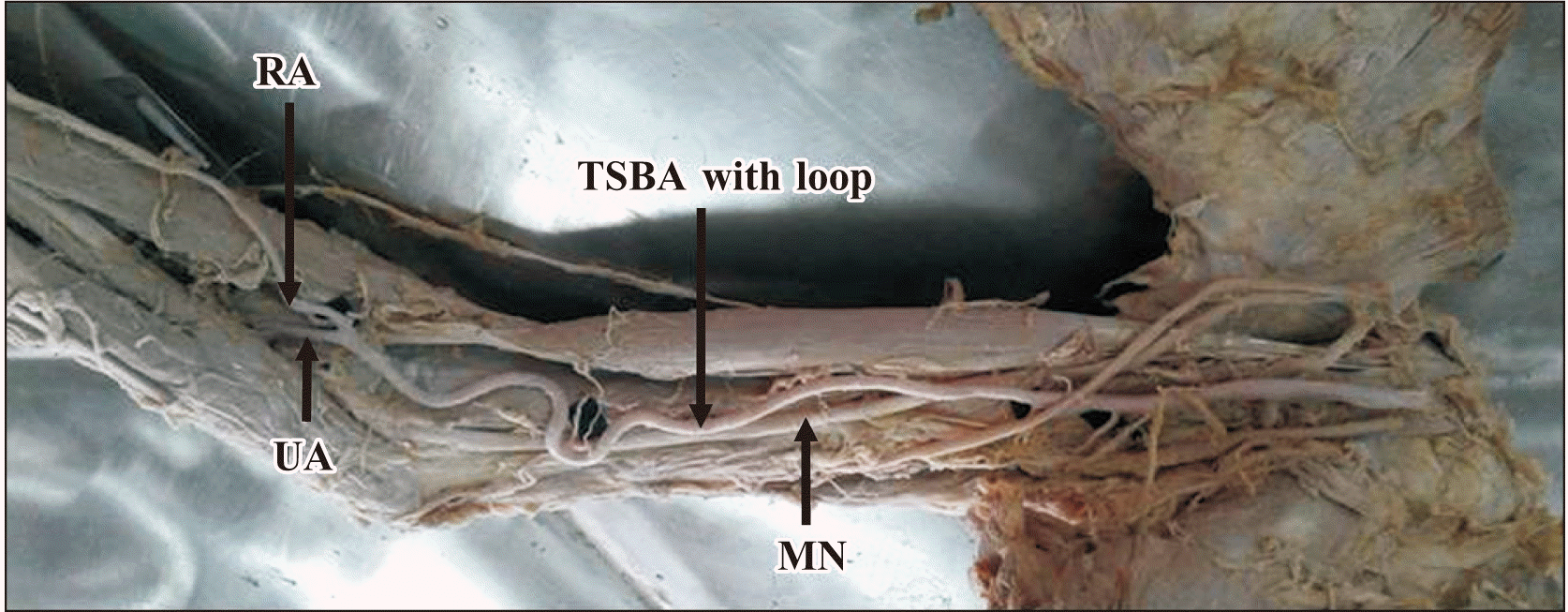
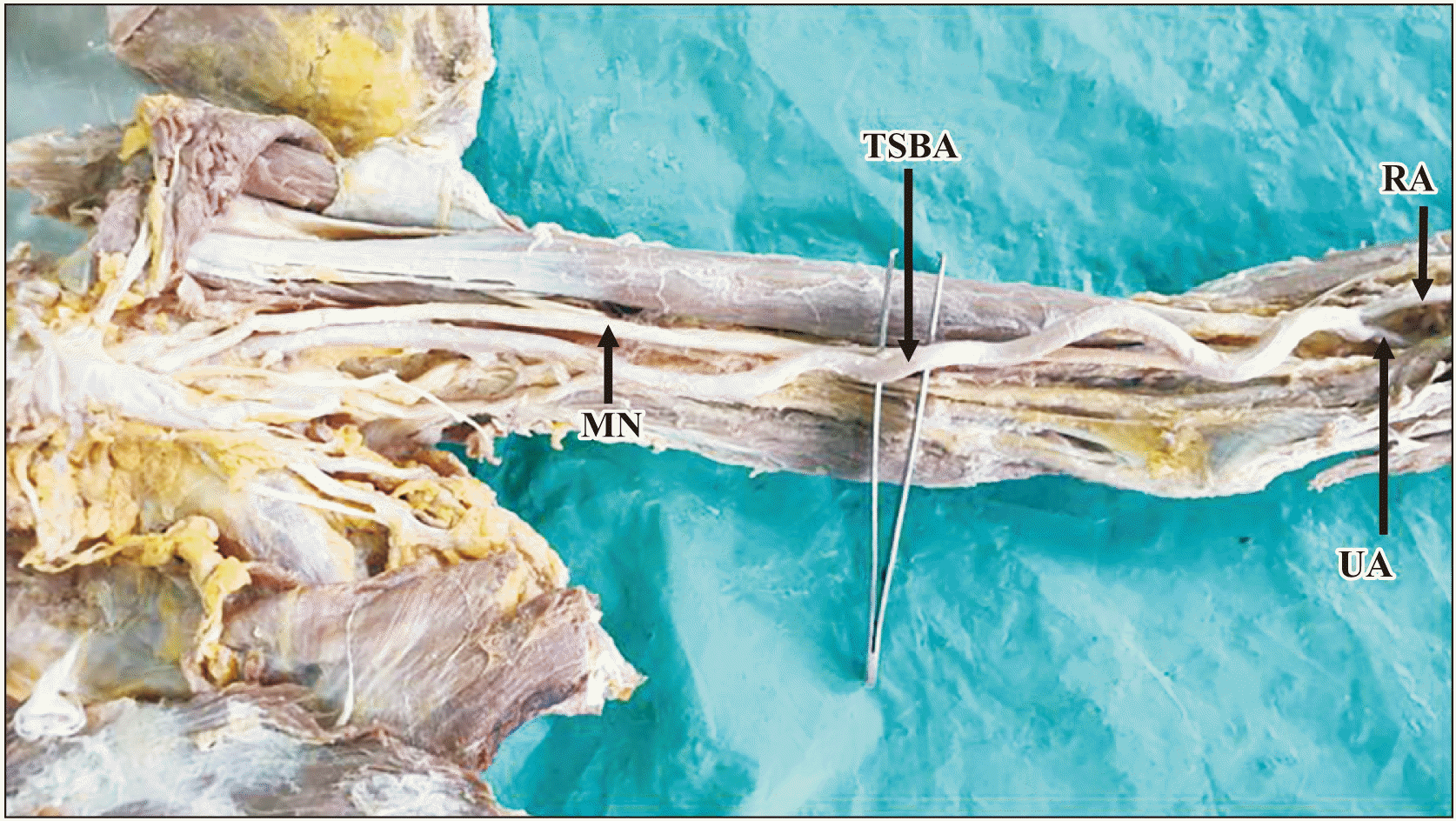
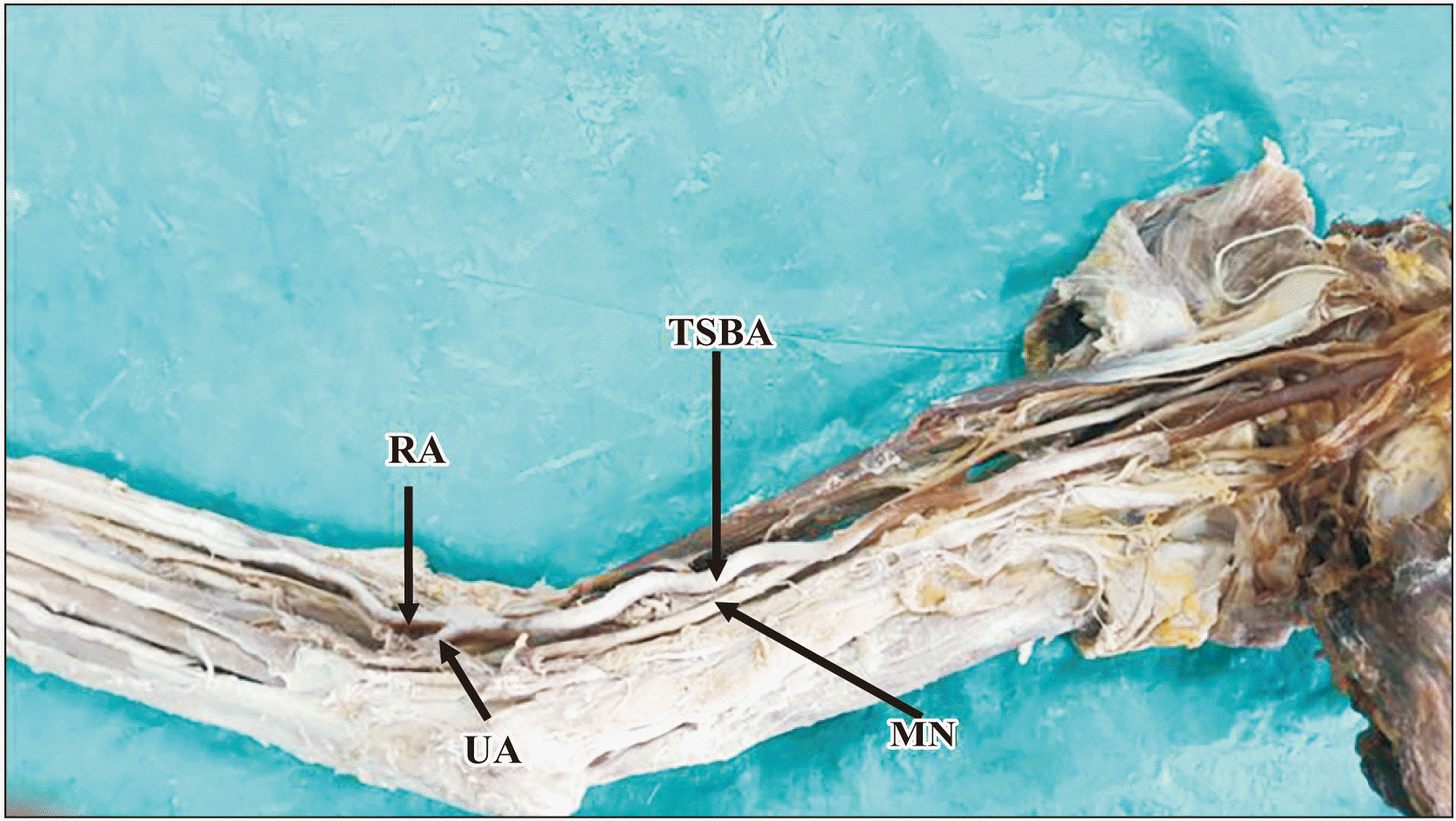
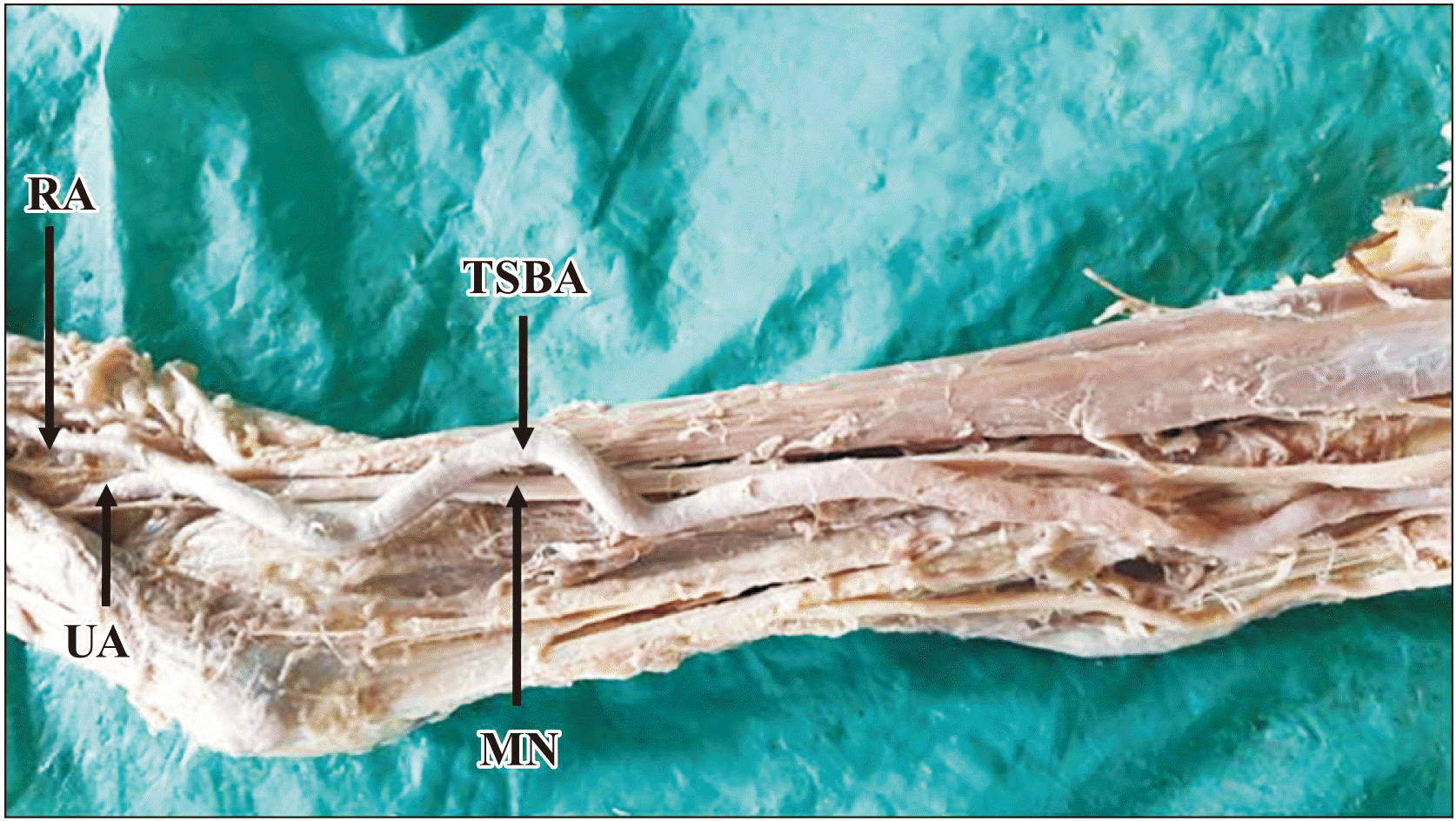
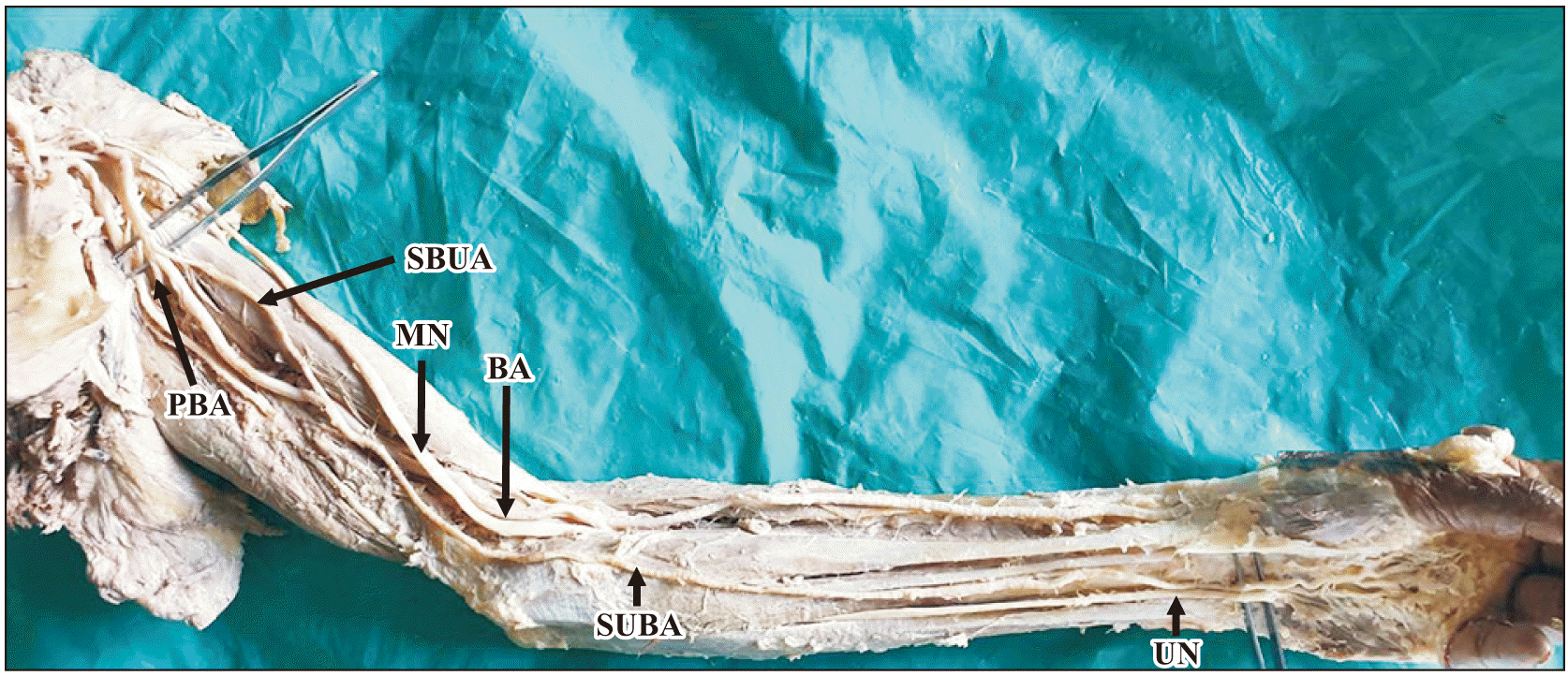
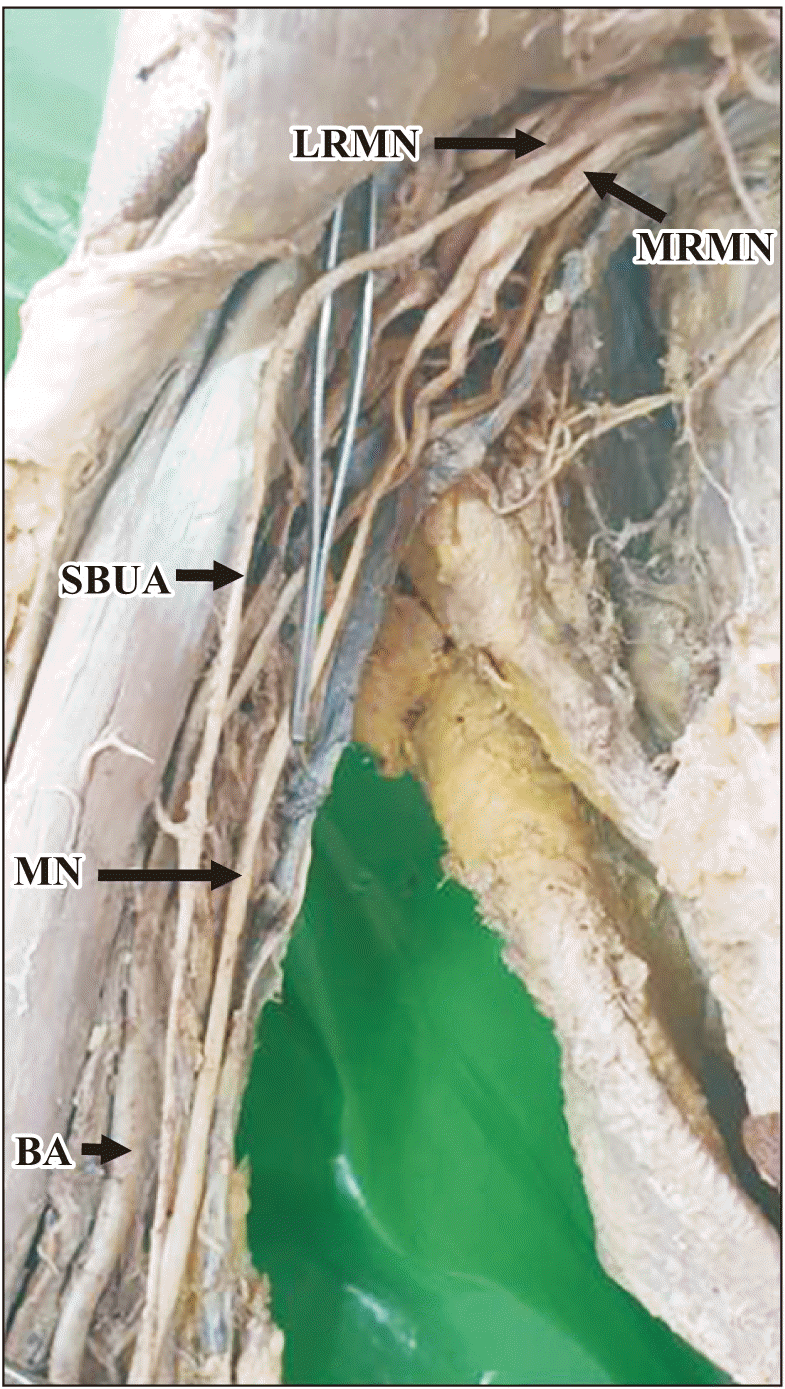
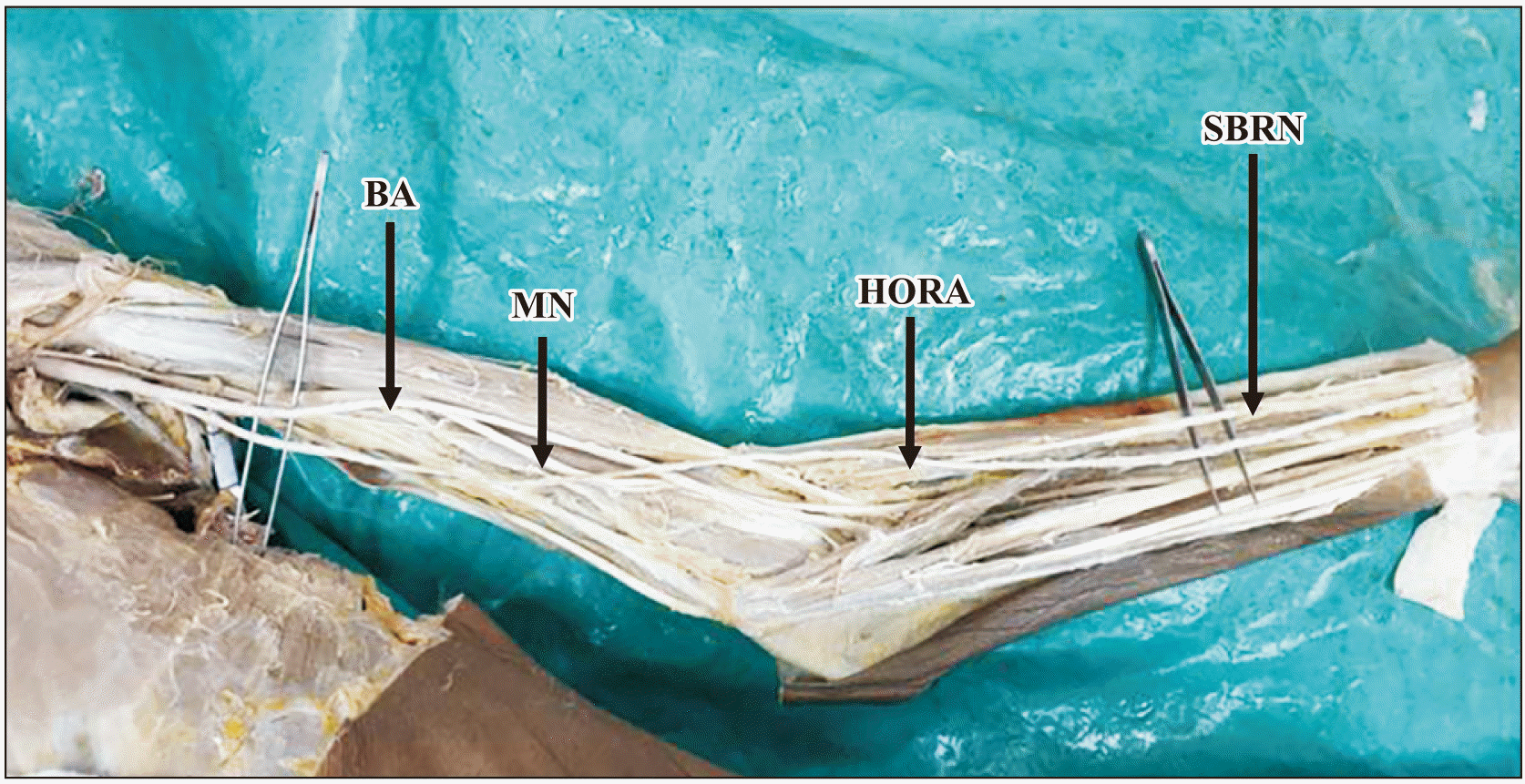
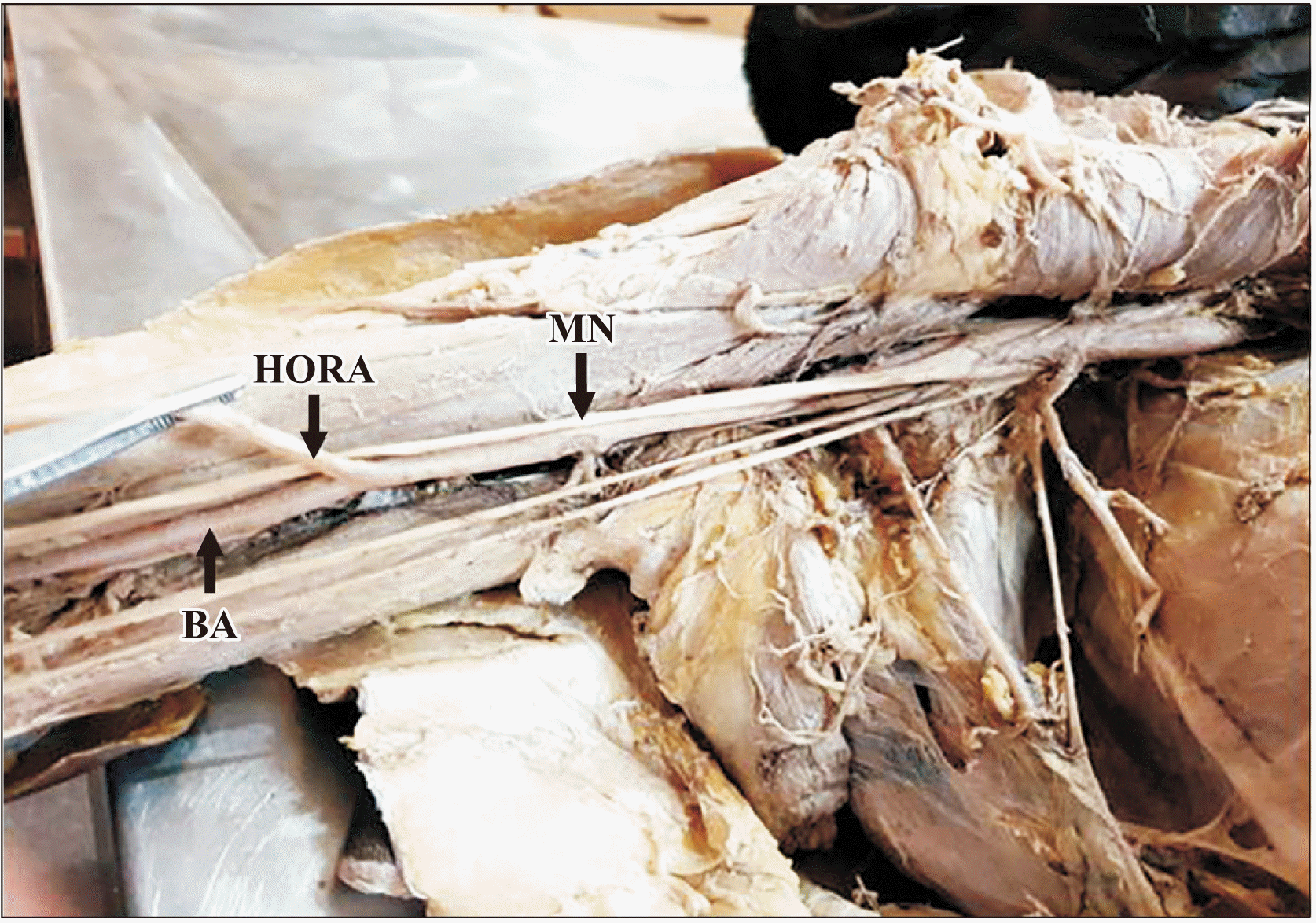
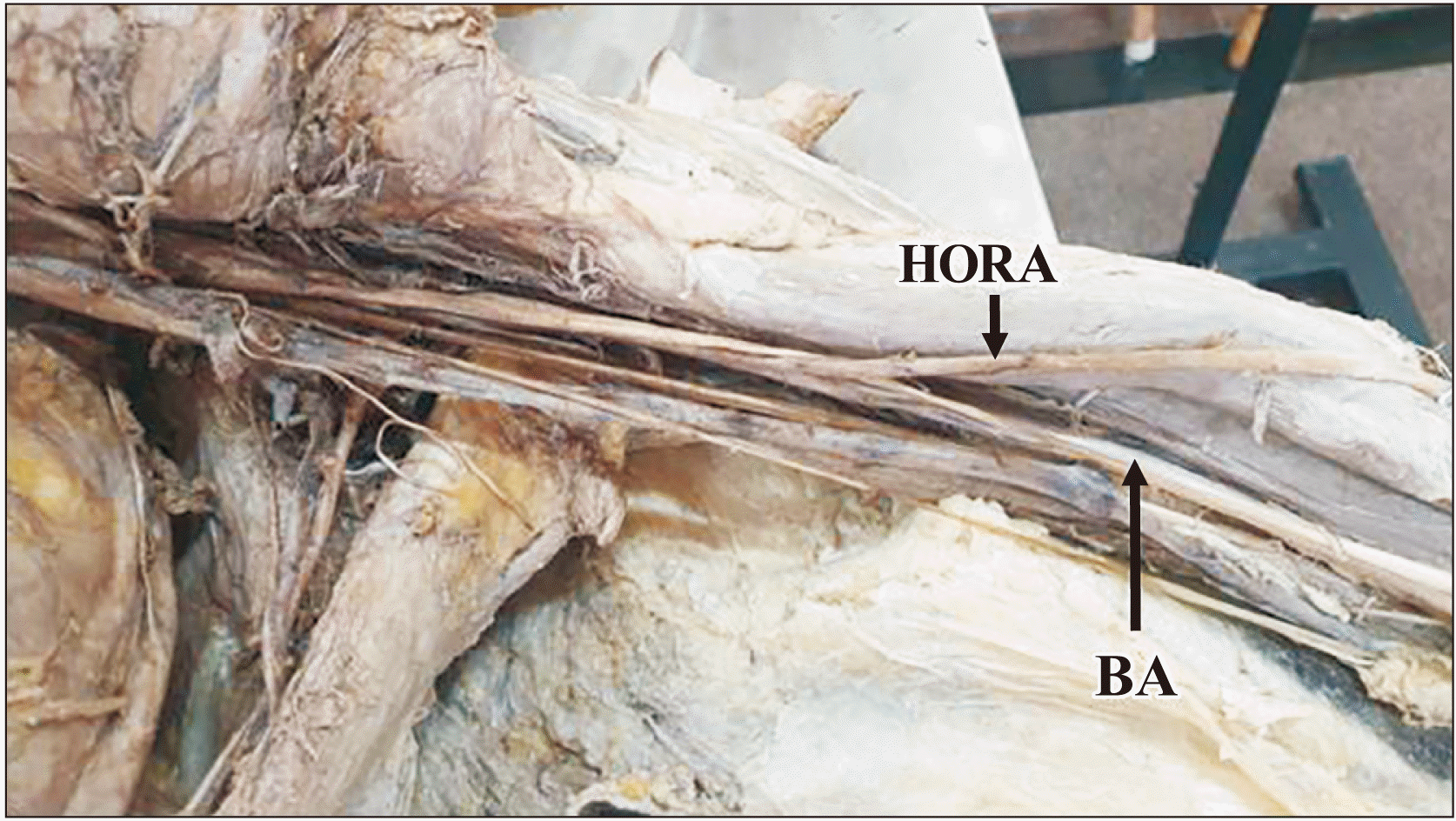
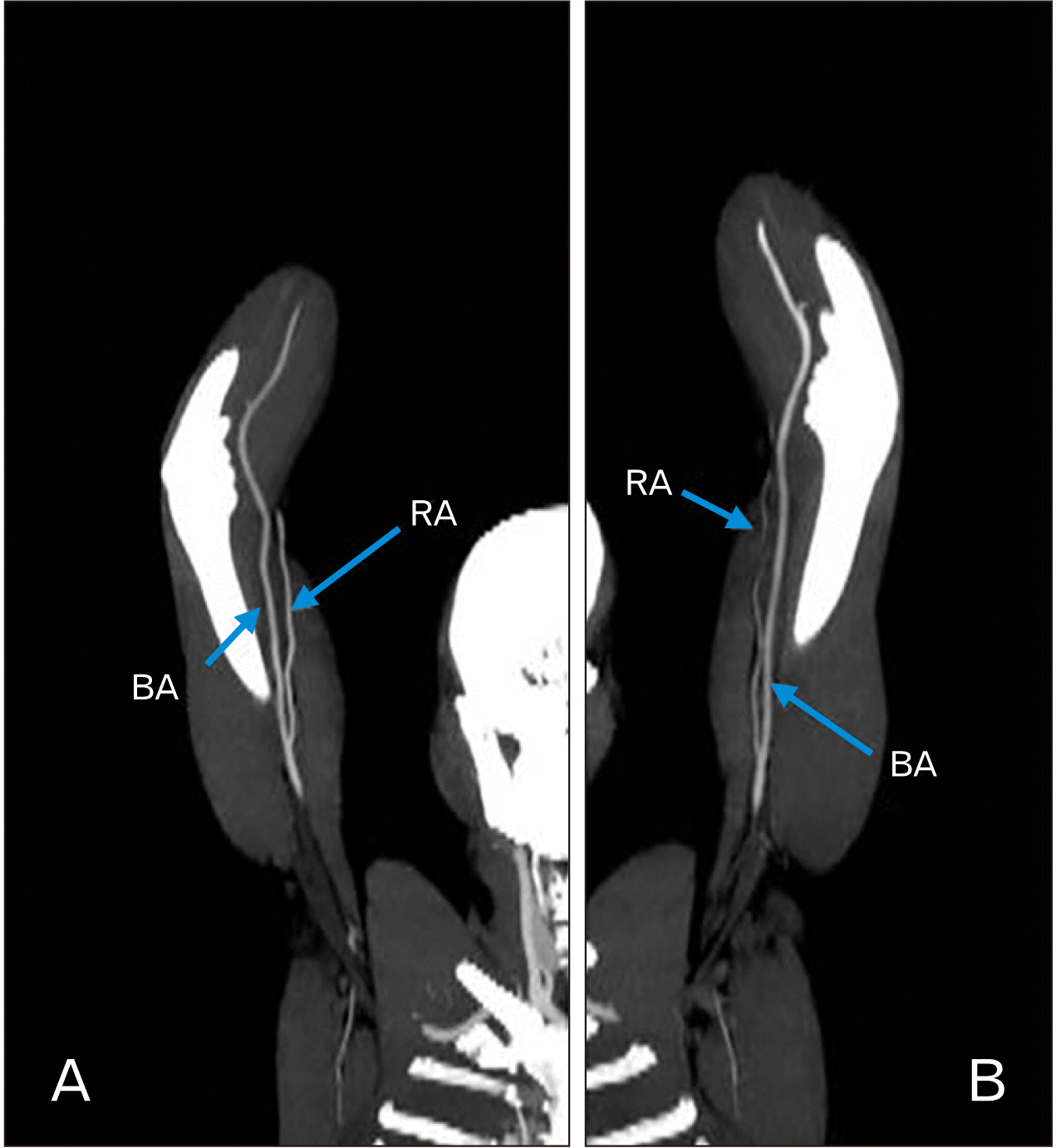
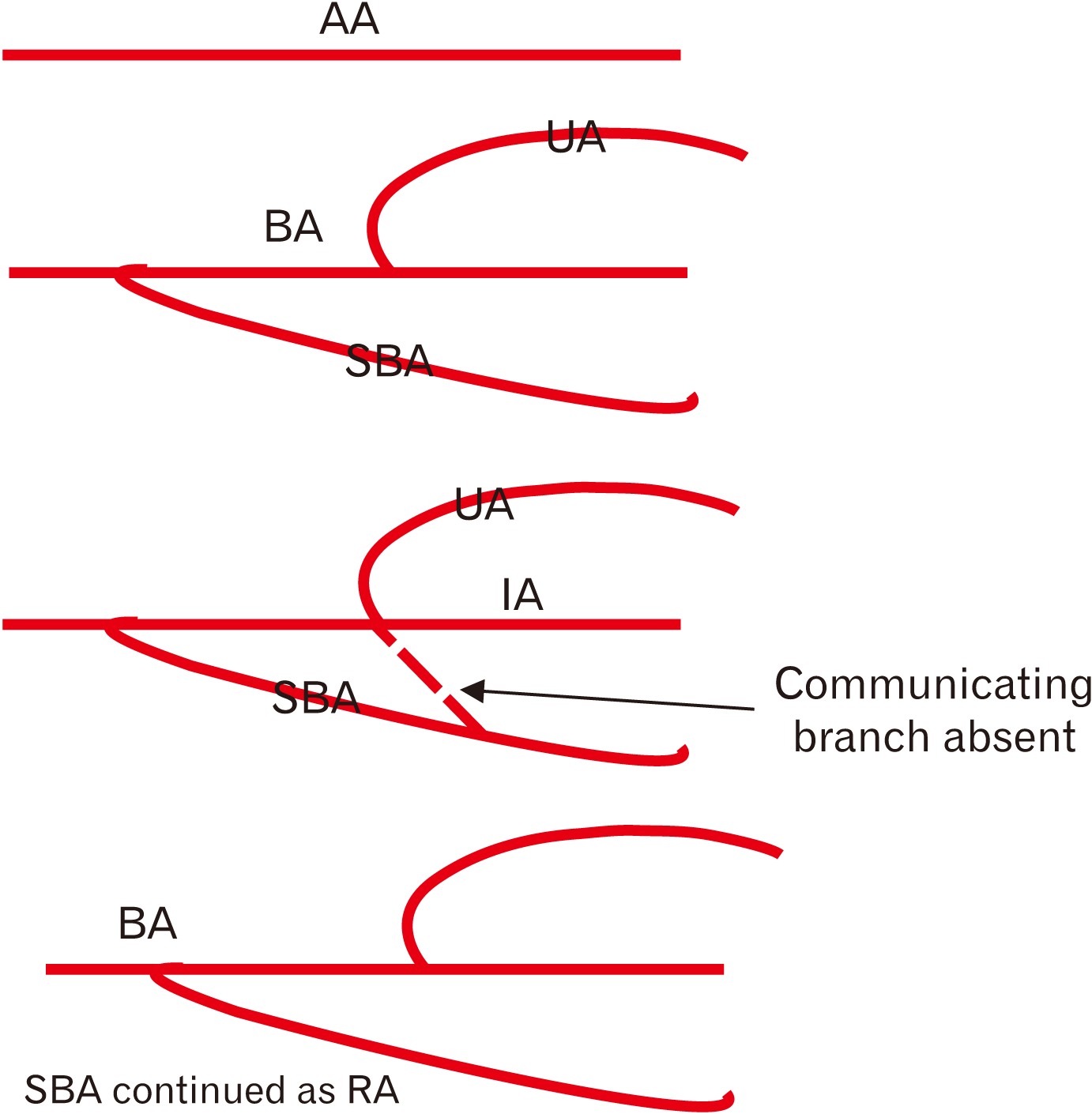
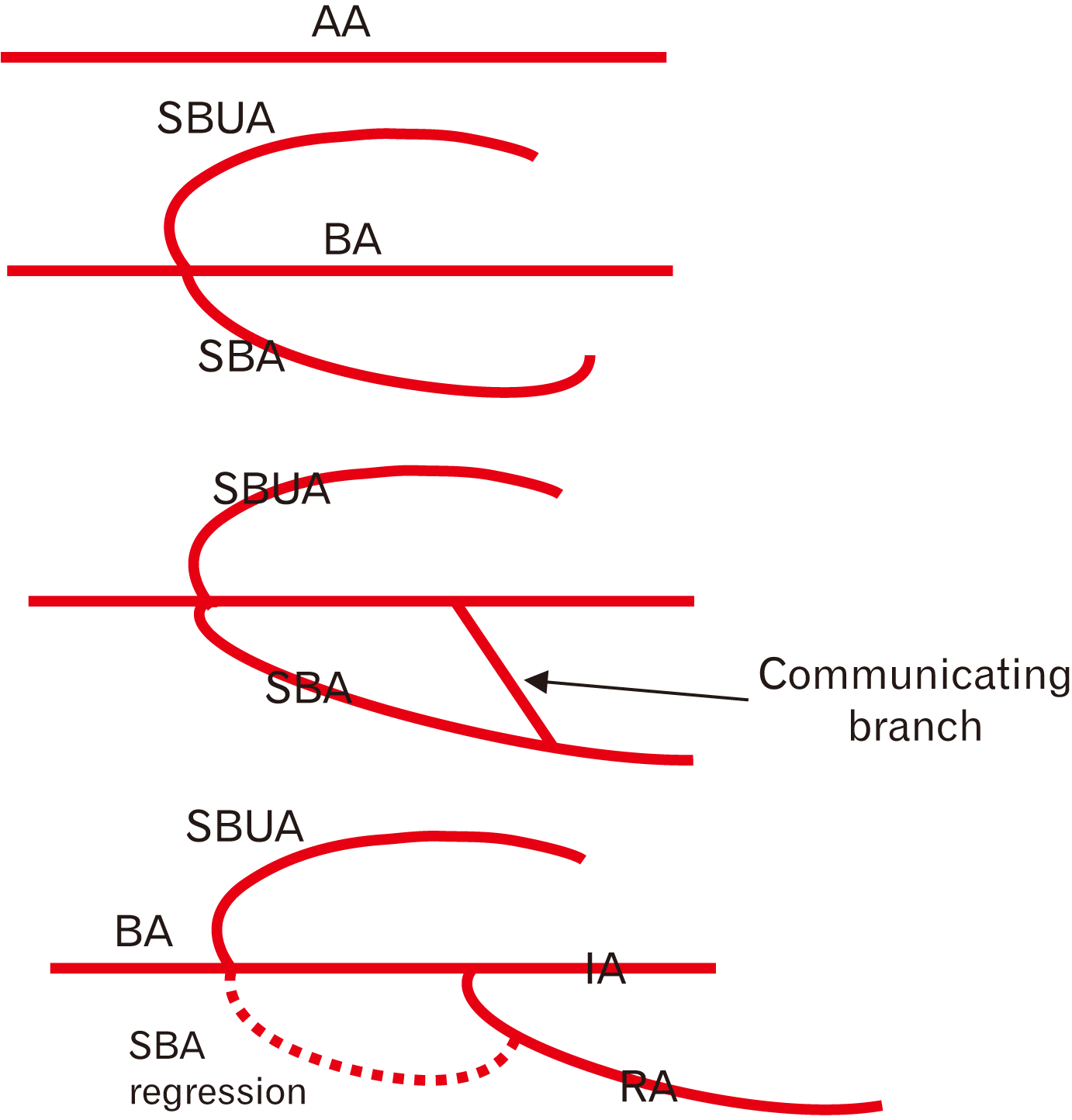
 XML Download
XML Download